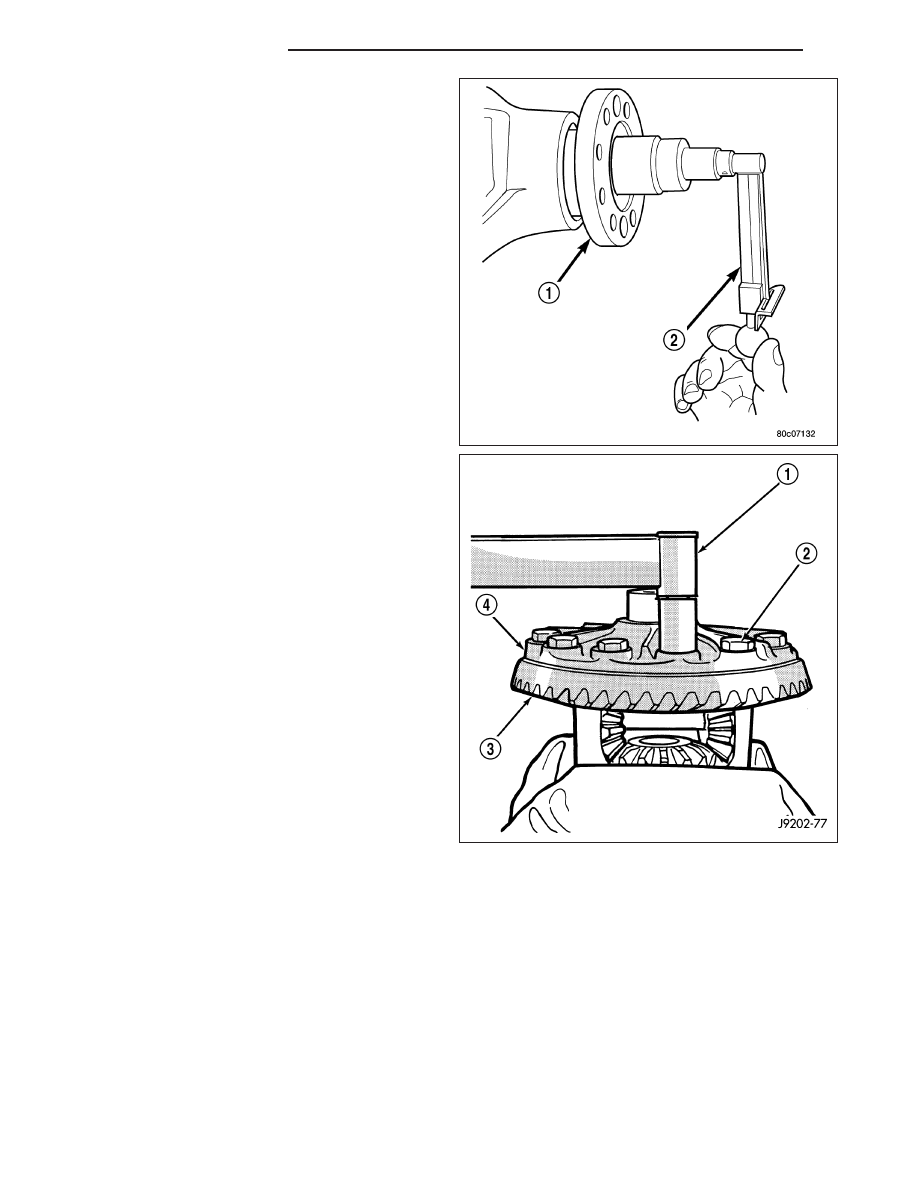Dodge Dakota (ND). Manual - part 48

15. Slowly tighten the nut in 6.8 N·m (5 ft. lbs.) incre-
ments
until
the
desired
rotating
torque
is
achieved. Measure the rotating torque frequently
to avoid over crushing the collapsible spacer.
16. Check pinion rotating torque with an inch pound
torque wrench. The pinion rotating torque should
be:
Original Bearings: 1 to 3 N·m (10 to 20 in. lbs.)
New Bearings: 1.7 to 5 N·m (15 to 35 in. lbs.)
17. Position exciter ring on differential case. With a
brass drift, slowly and evenly tap the exciter ring
into position.
18. Position ring gear (3) on the differential case (4)
and start two ring gear bolts (2). This will provide
case-to-ring gear bolt hole alignment.
19. Invert the differential case in the vise.
20. Install new ring gear bolts and alternately tighten
to 102 N·m (75 ft. lbs.).
CAUTION: Do not reuse ring gear bolts. Failure to
follow these instruction will result in bolts fractur-
ing causing damage.
21. Install differential in housing and verify gear mesh,
backlash and contact pattern.
22. Install differential cover and fill with gear lubricant.
23. Install
propeller
shaft
with
reference
marks
aligned.
3 - 108
REAR AXLE - 8 1/4
ND